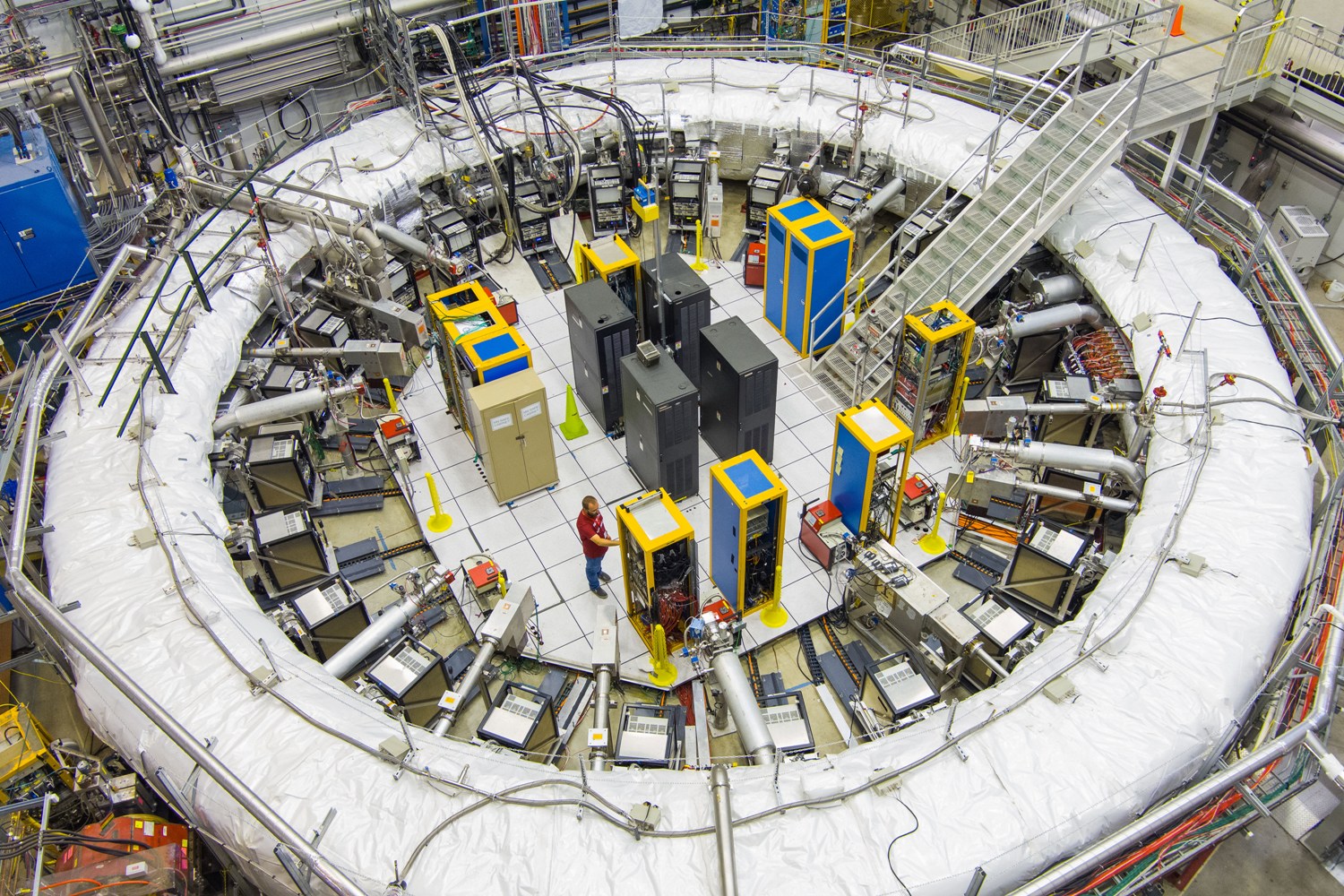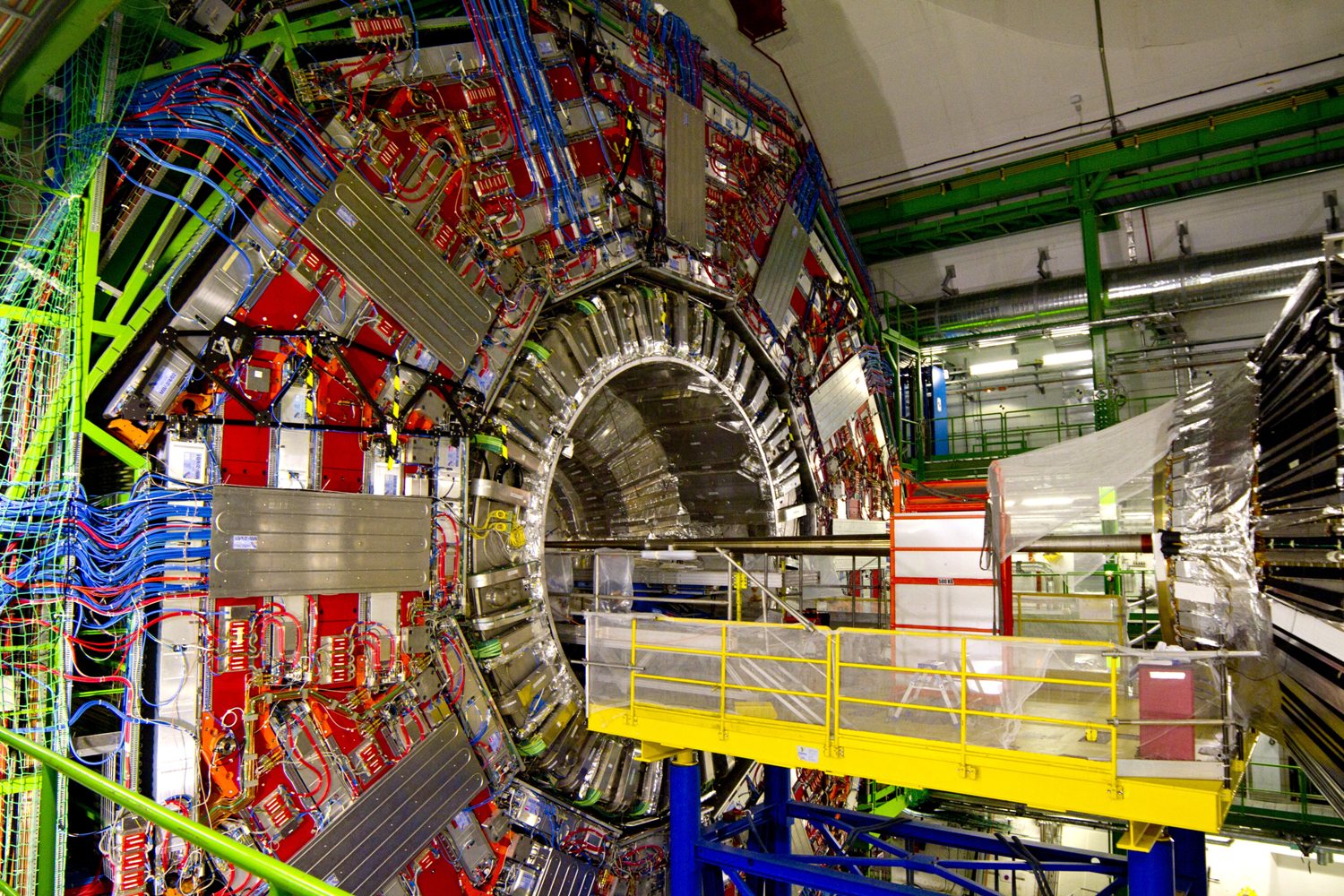In the heart of Batavia, Illinois, at the United States Energy Department’s Fermilab facility, a scientific journey is underway, one that might rewrite the textbooks of physics. It’s a quest to uncover a fifth fundamental force of nature that begins with the puzzling behavior of subatomic particles known as ‘muons.’ These unexpected phenomena challenge the very core of our subatomic knowledge. It persuades us to consider a reality beyond the four familiar forces. They are electromagnetic, gravitational, strong, and weak nuclear forces that have shaped our understanding of the cosmos for long. Buckle up as we explore the intriguing anomalies that could revolutionize our perception of the world as we know it.
The Standard Model (SM) of Particle Physics: Forces and Mysteries
Everything in our environment is made up of atoms. These atoms are made up of even smaller fundamental particles like protons, electrons, and neutrons. Just as a language is composed of letters, the universe is woven from fundamental particles. The Standard Model, or SM, of particle physics is a theoretical framework that identifies these fundamental particles and their interactions. SM brings together our understanding of the different forces of nature.

The Milky Way, our home galaxy.
Until the late 1800s, it was considered that the cosmos was formed by only electromagnetic and gravitational forces. By the 20th century, many experimental observations had revealed two more fundamental forces: strong and weak nuclear forces. These forces govern the interactions between particles at various scales in the universe.
Some of the salient features of these four fundamental forces have been classified in the following table:
|
FUNDAMENTAL FORCE |
DESCRIPTION |
EFFECTS/PHENOMENA |
|
Electromagnetic force
|
Governs the interaction between particles with electric charges. | – Responsible for electric and magnetic fields
– Manages the behavior of charged particles |
|
Gravitational force |
Attracts two masses toward each other. | – Holds planetary and stellar bodies in their orbits
– Governs everyday phenomena like falling objects |
|
Strong Nuclear Force
|
Binds protons and neutrons within atomic nuclei. | – Gives stability to the atomic nuclei
– Powerful force at close proximity, overcoming the electromagnetic repulsion between positively charged protons |
|
Weak Nuclear Force |
Responsible for particle conversion within the nucleus. | – Associated with radioactive decay processes
– Responsible for particle transformations with energy release |
Challenges to The Standard Model
Physicists rely on the SM to elucidate the universe’s workings. The predictive power of this model is tested through experiments. This would validate the comprehension of various subatomic phenomena. The SM has been extraordinarily successful in understanding and predicting a full description of the electromagnetic, strong, and weak nuclear forces that govern particle interactions. However, instances where the model falls short reveal its incompleteness. Therefore, although the SM is a groundbreaking masterpiece, it’s not without its blank pages.
The areas still unexplained by the SM are-
- SM can explain all three fundamental subatomic forces, but it does not include gravity. Gravity is incredibly weak in the subatomic world.
- The model fails to provide the ultimate unification of all the forces into one comprehensive theory.
- The nature of dark matter, the dominance of matter over antimatter, and the origin of cosmic inflation cannot be explained using the SM. All these remain a puzzle to this day.
- Moreover, several features of the SM, such as particle masses, are not fully known and require further exploration.
All these limitations of the model create room for speculation that an undiscovered fifth fundamental force might play a role in shaping the universe.
The Muon g-2 Experiment: Muons Dance to a New Tune
Muons are a type of subatomic particle and are considered fundamental, meaning they are not composed of smaller particles. They orbit atoms like electrons and can generate electric currents, but they are 207 times more massive than an electron. Also, they have the same negative electric charge as electrons, i.e., a -1 elementary charge (e).
At the Fermilab particle accelerator facility in the US, researchers were observing the movement of muons within a magnetic field. The ‘Muon g-2’ experiment injected these particles into a massive, donut-shaped superconducting magnetic storage ring chilled to a staggering -268°C (-450°F).

Fermilab Particle Accelerator
When engaged in a magnetic field, muons rotated around their axis like a spinning top. They jumped around the ring at nearly the speed of light. Muons also, interacted with other subatomic particles, creating vibrations or wobbles, which changed continuously. Detectors methodically observed this wobble, comparing the observed behavior to the SM predictions. The researchers calculated the ‘g-factor’ of the muons by accelerating them within the magnetic field. The ‘g-factor’ measures the wobbling speed of muons when they are closer to the speed of light,
Exploring Muons: The Unexpected Wobble
The wobbling frequency of the muons in the Muon g-2 experiment should adhere to the predictions from the Standard Model. The SM predicts a g-factor of 2 for muons. However, the experimental results portrayed that muons were showing faster movements with an anomalous g-factor of slightly less than 2. This behavior raised eyebrows as it deviated from the predicted patterns, casting doubt on the existing four known forces.
A key researcher on the project, Prof. Graziano Venanzoni of Liverpool University, told BBC News, “We think there could be another force, something that we are not aware of now. It is something different, which we call the ‘fifth force’. It is something different, something we don’t know about yet, but it should be important because it says something new about the Universe.”
Compelling Evidence: A Reinforced Revelation
The Fermilab experiment first began in 2021, when the researchers announced the first results from the Muon g-2 experiment. Recent progress involves analyzing data from subsequent Muon g-2 experiments. Later experiments yielded about four times the data from the initial announcement. Also, it points even more strongly toward a new force of nature.
The latest round of results were extremely precise, with an inaccuracy of 0.20 parts per million. More data is already being deciphered, and the team may be ready to reassess the SM after the investigation is completed in a few years. According to Fermilab, the next batch of results will be “the ultimate showdown” between theory and experiment, potentially revealing new particles or forces.
The Quest for a Fifth Force: Parallel Pursuits
The global scientific community is on the brink of a transformative breakthrough. The quest for the fifth force spans beyond Fermilab. The Large Hadron Collider (LHC) at CERN in Europe is also trying to identify deviations from the SM. Although results from LHC experiments might differ in their experimental outlook, the cumulative impact can totally change the path of particle physics.

The Large Hadron Collider at CERN, Europe
Prof Jon Butterworth of University College London, who works on the Atlas experiment at the LHC at Cern, told The Guardian “If the measurements don’t line up with the prediction, that could be a sign that there is some unknown particle appearing in the loops—which could, for example, be the carrier of a fifth force,”
“It would fire the starting gun for a revolution in our understanding because the model has withstood all experimental tests for more than 50 years,” said Dr. Mitesh Patel, a physicist at Imperial College London, also working at the LHC to find shortcomings in the SM.
The pursuit of a potential fifth fundamental force goes beyond discovery; it represents the unquenchable human spirit of curiosity and exploration. As the experiment advances and hypotheses evolve, yet another uncharted secret of the universe is an inch closer to illumination. If confirmed, this discovery wouldn’t just be a new chapter—it would rewrite the fundamental laws of physics, ushering in a new era of scientific discovery.
If you enjoyed reading this article, show us your support by purchasing merchandise at our Shop.
Alternatively, you could sign up for our newsletter. That’s free.


